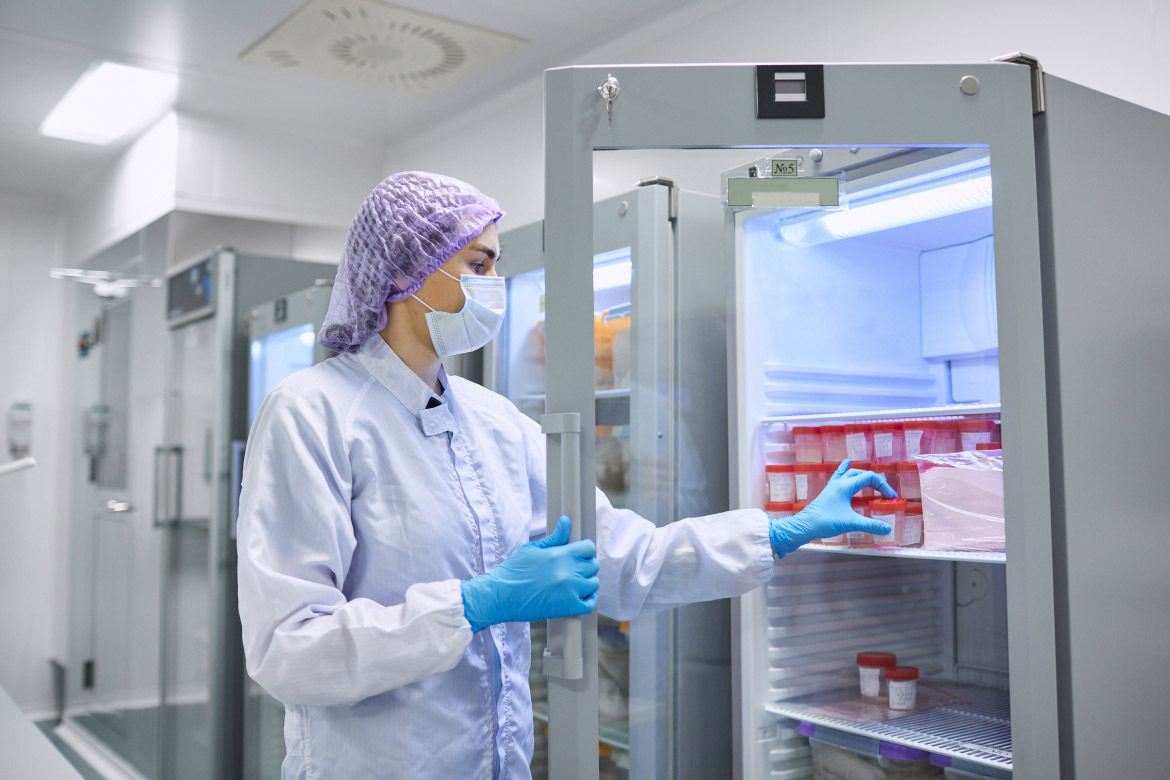As the medical industry’s demand for vaccines and medicines grows, health-care organizations will need to make additional investments in keeping a high quality medication refrigerator temperature log. By 2024, it’s expected that the U.S. medical refrigerator market will grow to $4.2 billion. With so much money on the line, it is imperative for medical staff to maintain accurate refrigerator temperature logs at all times. Failing to do so can result not only in significant financial losses but also in severe safety and human health costs from spoiled inventory.
At Surglogs, we want to make sure that you thoroughly understand how to maintain an accurate temperature log for the medication refrigerators at your facility. Here are five easy steps towards ensuring that your medication refrigerator temperature log meets the highest standards.
Step 1: Install a Digital Data Logger (DDL)
In the past, medical refrigerator temperatures were logged by hand and on paper. This often led to errors when staff members were either recording the data or transferring it to a data management system. Another problem was that the thermometers were generally too simple. These thermometers could tell you that an excursion—a change in the temperature—had happened, but not when it happened or how long the parameter was out of range.
Fortunately, medical staff no longer have to worry about these issues. Digital Data Loggers (DDL) can automatically take temperature readings every few minutes and record the data into a downloadable data set. The recorded data can also tell you exactly when an excursion happened, how long it lasted, and by how much the temperature fluctuated. With this data, staff members can immediately know whether a vaccine has been compromised or still safe to use.
DDLs are not only cost-effective and straightforward to install, but they also provide continuous, automated, 24/7 monitoring. Since the data that DDLs collect is stored in a cloud, they allow for remote monitoring and can generate immediate alarms in the event of any temperature excursions.
Step 2: Measure Medicine Temperature
Anyone who’s ever gone swimming in early spring knows that the water can still be pretty cold. This is because water takes longer to warm up than air. It’s the same with medicines in a refrigerator: the stored medicines will warm more slowly than the surrounding air. As you can probably guess, this can result in inaccurate temperature readings when using a simple thermometer that only measures the thermal mass of the surrounding air.
To ensure more accurate temperature readings, you need to combine a buffered thermometer with your DDL system. A buffered thermometer is a temperature probe inserted into a bottle containing a buffer liquid—a substance with a similar viscosity to that of the stored medicines. Since the buffer’s temperature will not be as affected by slight changes in the air temperature, you’re going to get more accurate data readings.
Step 3: Use a NIST Calibrated Thermometer
For monitoring the temperature of medicine, you can’t just use any old thermometer. You need to use a thermometer that has been calibrated by the National Institute of Standards and Technology (NIST). NIST is a U.S. government organization charged with developing and promoting measurement standards and technology that improve quality of life. NIST certification means that a product has been successfully tested against the organization’s strict requirement standards. NIST also provides standard reference materials (SRM) for each product that allows users to compare whether their device is working within acceptable parameters.
Step 4: Ensure the Thermometer is Positioned Correctly
How you position the thermometer within your refrigerator will have an impact on its temperature readings. Ideally, you’ll want to keep it close to your stored medicines. Otherwise, your buffer bottle will show a temperature reading that’s different from that of your inventory. You also need to be careful that you don’t place your thermometer in a location where it can be easily moved or knocked out of place.
Also, you need to watch out for cold spots in the refrigerator, where the air is colder than average. Typical cold spots to avoid include the bottom storage shelf or someplace close to the fan, next to the refrigerator walls, or directly on a glass shelf.
Step 5. Recalibrate Your Thermometer
Even when you’re using a calibrated thermometer, its accuracy can begin to drift over time. This typically happens due to mechanical shock from improper handling. Sometimes, new medical staff may not realize how sensitive these devices can be, especially the more advanced devices that carry delicate sensors in their tips. Extreme temperature changes, usually due to improper positioning, can also throw off a thermometer’s accuracy.
Therefore, it is necessary to regularly recalibrate your thermometer to ensure accuracy, usually on an annual basis. Keeping your thermometer correctly calibrated will also extend its life cycle and save you money in the long term.
Final Thoughts
Once you have an effective DDL and thermometer system in place, you’ll then need an easy way to track and manage all that data you’re collecting. Surglogs provides an all-in-one solution to your medical data logging needs with a customizable dashboard featuring automatic reminders, email notifications, and automated data exporting. You’ll never again have to worry about a compliance audit when you work with us.
For the medical industry, ensuring an accurate log of refrigerator temperatures is a top priority. Failure to do so can not only result in patients receiving compromised or ineffective medication but can also result in poor patient outcomes.
